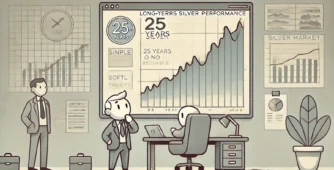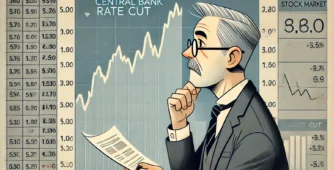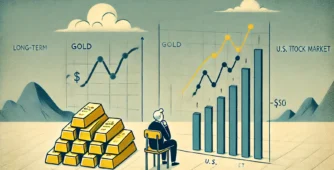In this intriguing study, we delve into the behaviour of small cap and large cap stocks and their performance during different market conditions. By analysing charts of the large caps & small caps of both Indian and the US markets, we can gain valuable insights into the trends and strength of both these markets.
Segment A – Indian Markets
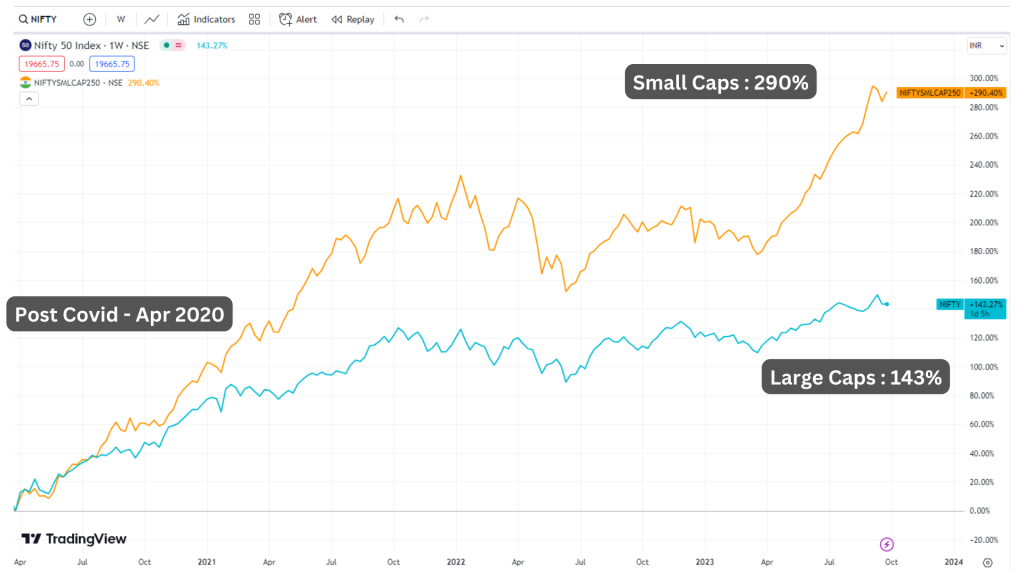
During the COVID crash, it is interesting to note that small caps experienced a slightly larger drop compared to their large cap counterparts. However, the rebound that followed was nothing short of phenomenal for small caps. From the bottom point, small caps have surged upwards, achieving a remarkable 290% increase from 1st April 2020 onwards. In contrast, large cap stocks have only managed a 143% increase during the same period.
These findings bring an important message to the forefront – despite the challenging economic climate, the growth in the Indian economy remains intact. The dramatic rise in small cap stocks, without a subsequent fall, indicates a continuation of an upward trend rather than a bubble. This pattern can be likened to a flag formation, which is traditionally considered a strong indication of future positive performance.
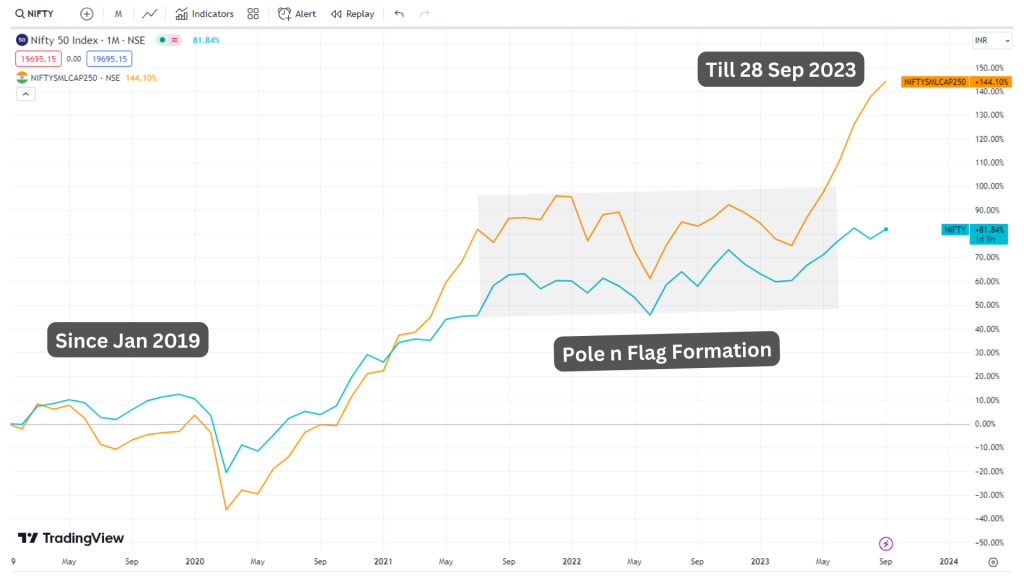
Segment B – US Markets
Now, let’s draw a comparison between the Indian market and the American market to gain further perspective. In the American market, the Russell 2000 represents small caps (denoted by the orange line), while the S&P 500 represents large caps (denoted by the blue line).
Analysing the charts, we observe that small caps in the American market have been trailing behind their large cap counterparts for at least the past year and a half to two years. In fact, they have made minimal gains since pre-COVID levels, with only a 5% increase over three years. On the other hand, large caps have experienced a substantial 26% increase during the same period. This stark contrast demonstrates the stress present in the US system when it comes to the broader market base.
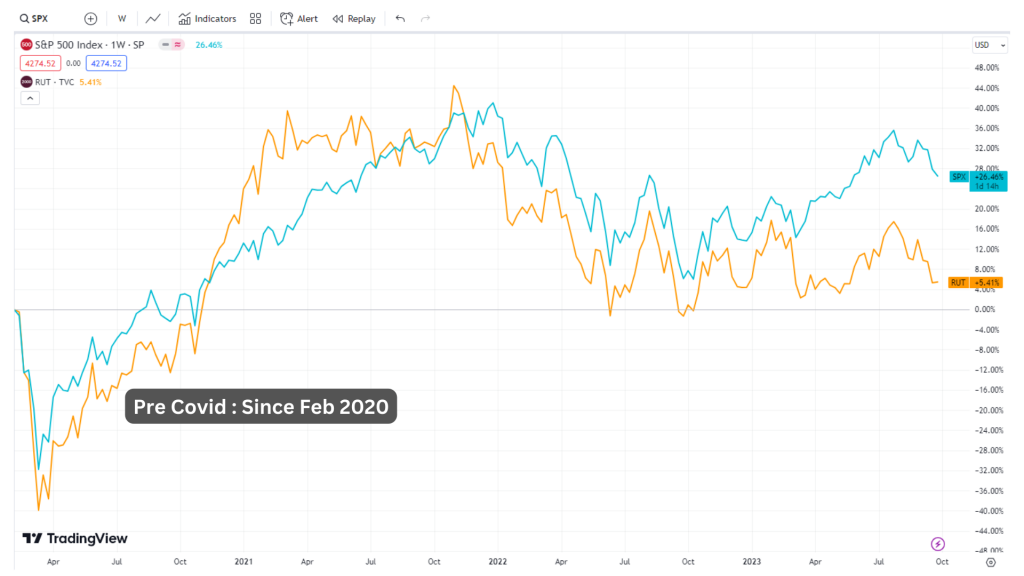
It is worth noting that within the S&P 500, a handful of top stocks (often referred to as the top ten or twenty stocks) are leading the market, contributing to the recent surge. However, when we look beyond these top stocks, it becomes apparent that the broader market has remained stagnant. This stagnation is a significant headwind for the American market because if it is not growing or performing well, it can have adverse effects on other markets globally.
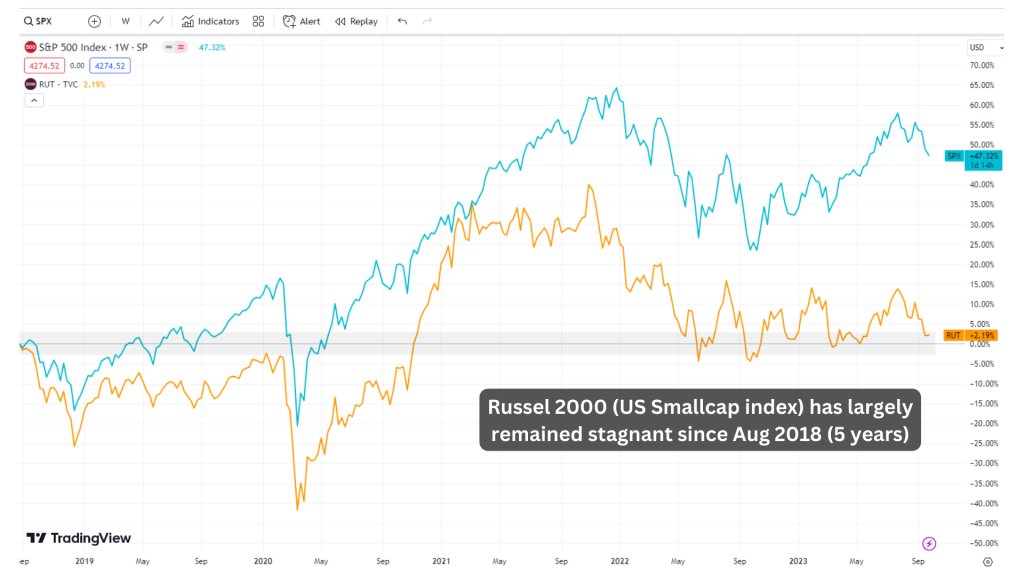
It is also quite interesting to note that US Small caps have stayed absolutely stagnant since Aug 2018 which is a long period of more than 5 years
Fortunately, the impact on our market has been minimal thus far. Nonetheless, there are concerns arising from various economic indicators such as the US yield, dollar index, and oil prices. These factors warrant our attention as they could potentially influence our market moving forward.
Key Takeaways
Despite the initial drop during the COVID crash, small caps have rebounded exceptionally well in the Indian market. Their substantial increase, without a subsequent fall, signifies the strength and continuation of an upward trend.
The resilience of small caps in the Indian market suggests that the broader economy is doing well and that the growth in the Indian economy remains intact. This positive trend in small caps acts as a bolstering factor for the overall economic outlook.
The American market presents a different scenario, with small caps trailing behind large caps and experiencing minimal gains since pre-COVID levels. The top stocks within the S&P 500 have been driving the recent market surge, but this surge does not reflect the broader market’s performance.
The stagnation of the broader market in the US market is a significant concern. If the US market continues to underperform and stagnate, it can have adverse effects on other markets globally, including our own.
Download the WeekendInvesting App

If you have any questions, please write to support@weekendinvesting.com




